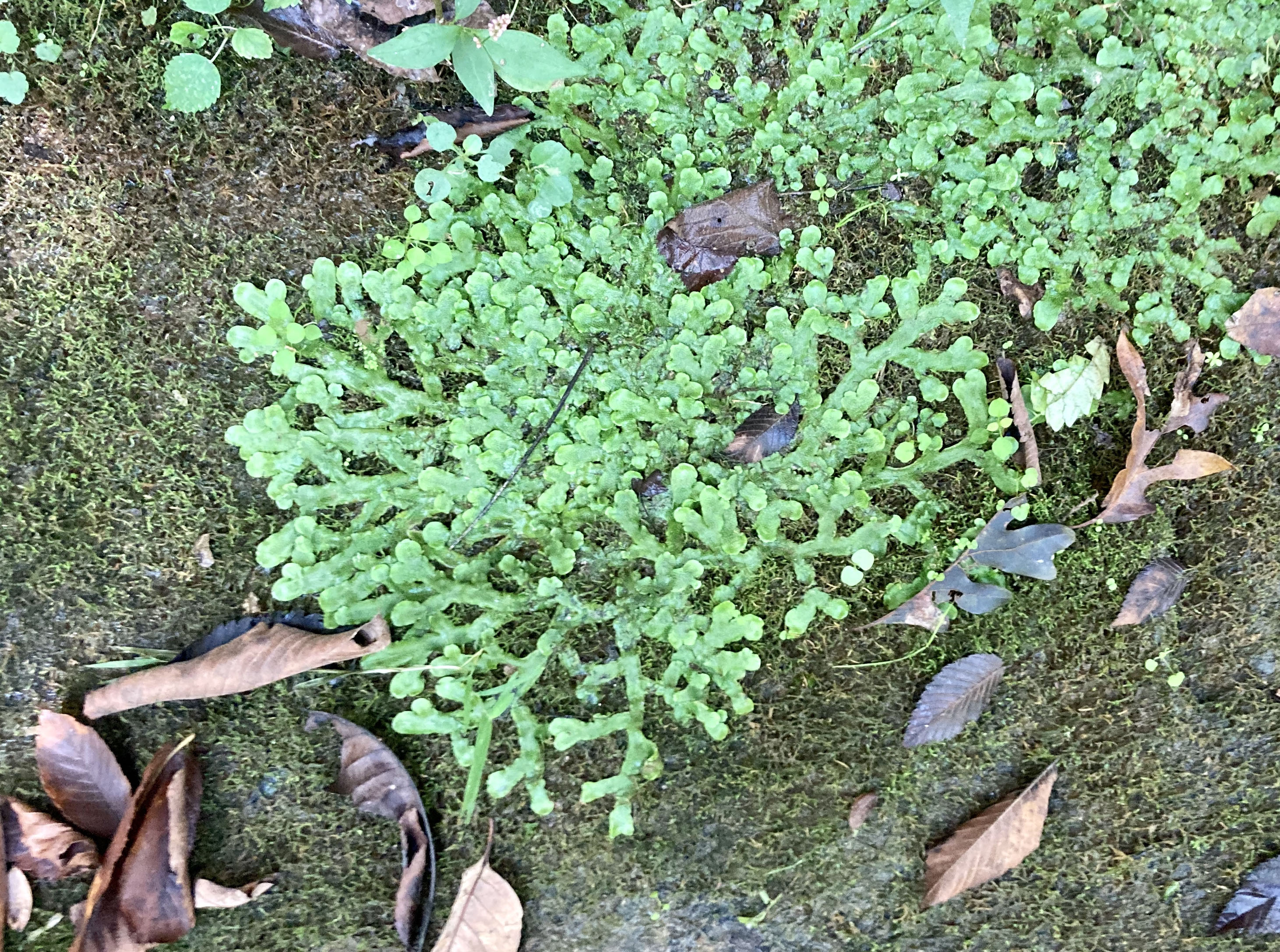Liverworts
Contact
University of Arkansas System Division of Agriculture
Cooperative Extension Service
2301 S. University Ave.
Little Rock, AR 72204

Liverworts
I’m a plant generalist. I love all plants and know a bit about a lot of different species, but I’m still a generalist. It doesn’t bother me that I can’t accurately identify each and every yellow-flowered member of the daisy family that blooms in the fall. A specialist would worry about such a lapse in knowledge and strive to correct the deficiency, but we generalists say, “Oh that’s just another YFA” – yellow flowered Asteraceae – and be satisfied.
But occasionally I run across something that requires a bit of investigation. Such was the case last month when I came upon a seeping shale/mudstone bank just above the King’s River in Madison County that was partially covered in a cloak of alumroot (Heuchera villosa var. arkansana), mosses and a plant I was sure was a liverwort. But which liverwort, I wondered?
I used the ID app on my cell phone, and it told me unequivocally it was a selaginella from South Africa. I had a hunch that it was wrong. I did a simple internet search, and my “AI copilot Bing” provided some good basic information on liverworts, but either my computer illiteracy or the poor quality of the photo prevented my new AI friend from identifying the species. It turns out that more than 9,000 species of liverworts have been described, so a bit of digging was required.
So, another internet search led me to a recent paper describing the 120 species of liverworts found in the interior highlands of North America, an area encompassing all of the Ozarks and the Ouachita Mountains. After a bit of back and forth between computer, laptop and cell phone, I soon landed on a likely suspect, Metzgeria conjugata, a species going by the common name of rock or forked veilwort.
Liverworts are ancient plants that lack a vascular system and true roots. They have long been lumped with moss and lichens, but recent DNA data suggests that while they are all plants, they are otherwise unrelated. The liverworts – so named because the ends of the thalloids (leaf-like structures) are rounded and liver-shaped and were used in olden times under the “doctrine of signature” to treat liver disease – are divided into two broad groups. The leaf type which has a stem with overlapping, scale-like leaves and the thalloid type with broad, flattened thalloids that branch into a forked “Y”.
The veilworts are one of the most common liverworts. Some are found throughout the world in both hemispheres while others have a more limited, but still widespread range. Backwards-looking DNA computer projections based on hypothetical mutation rates predict the 107 species of Metzgeria mostly began diversification about 100 million years ago. But a couple of closely related clades date back to 240 million years ago and coincide with the breakup of the supercontinent Pangea, better explaining the worldwide distribution of some species. My suspicion is that the lack of a vascular system places these plants back near the beginning of plant life on terra firma, but such flimsy, delicate tissue is not a candidate for becoming a future fossil.
Two Metzgeria species are commonly seen in the northern hemisphere. M. canjugata grows on rocks, especially favoring seeping rocks where a constant supply of water is assured. Without a vascular system, water and nutrient uptake is through the epidermis of the tissue and through the root-like structures that hold the plant in place. The branching thalloid is up to a quarter-inch wide but may extend across a rock surface for an inch or so before it branches. Eventually the rock will be veiled in a glistening matt of green. M. furcate is found on bark and tree branches. Reproduction for these liverworts is by means of sexual or asexual spores.
I admire the specialists who have the patience and time to focus on the minutia of nature, teasing apart the tangled web of life. I would never have made a good bookkeeper, so such detail work is just not my thing. I don’t need to know all the liverworts, but at least now I know one. While painting with a broad brush can lead to sloppy work, it mostly gets the job done.
